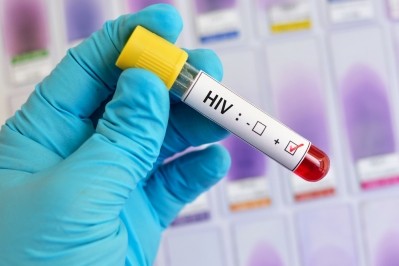Luigi Naldini: Gene therapy no longer a ‘dream’ but big pharma must step up

It’s a field which offers the potential to prevent and treat rare diseases once deemed incurable by targeting the underlying genetic problem.
At the heart of this revolution stand individuals like Professor Luigi Naldini, who has been at the forefront of the sector for the past 25 years.
Professor Naldini, director of the San Raffaele Telethon Institute for Gene Therapy in Milan, Italy, recently received a lifetime achievement award at Advanced Therapies 2024 in Miami, a recognition which inspired reflection on his long career in gene therapy research.
“It’s a great honour and an occasion to look back at the early days when I got started with this dream of gene therapy trying to develop gene transfer vectors from HIV. It also gave me a sense of perspective – this strategy started with dissecting the virus genome at the bench and some of its applications have now reached the market as approved drugs, which has not been a short or easy path. It took almost 30 years, which means there have been many challenges, setbacks, and frustrations – but also encouraging advances and successful milestones,” he tells Biopharma Reporter.
However, Naldini stresses the need for optimism, he emphasizes that with gene therapy now having such a great amount of evidence that ‘this is not a dream or a hype’.
While the industry has ‘learned not to oversell – we have something real to showcase and justify raised expectations,’ he adds.
Impact of HIV epidemic
Naldini’s fascination with gene therapy and viral vectors came to light after he began working on HIV research at the height of the AIDS crisis, which he describes as a seminal experience in his career.
“When I studied medicine, the big issue was cancer and we were also starting to look at neurodegenerative diseases. However, the consensus was that genetic diseases were untreatable and incurable, but infectious diseases were something of the past – that we had won,” he says.
However, the sudden emergence of HIV presented Naldini with a unique opportunity to dissect the virus and design a vector, despite the fear and emotional burden that loomed over the disease.
“We have been through another pandemic recently so we know what it means to be fearful of a new virus, but HIV was regarded as 100% lethal. Of course it was more limited in terms of spread and we always knew the risk of exposure was associated with certain behaviours or certain at risk groups,” he says.
“At the time, the infected person essentially had an undeniable path to death in a few years. These were young people most of the time and I witnessed how this changed medicine.”
For Naldini, HIV had two components – a ‘human tragedy which was impacting the population at large’ and a ‘virus that we were discovering step-by-step, day-by-day’ to assess if it could be a valuable tool for gene transfer.
“It was incredibly fearful to work with. I remember really thinking carefully about – should I really go into that? I would be working in a biohazard, confinement area together with other young scientists and there was a lot of worry at the time.”
However, Naldini was attracted to the project as it was a ‘new endeavour’ in which he was able to start from scratch, rather than taking a vector which was already in development and trying to modify or improve it.
“I decided to really engage in this new idea of gene therapy and to really understand it – the possibility to start from a new virus, the whole process of designing a vector and disabling a virus was attractive, although of course potentially more challenging,” he adds.
State of the industry
Having watched the advanced therapies sector grow and evolve, Naldini admits that the industry has faced ‘a lot of really serious challenges’ and the whole idea of gene therapy was close to being ‘shut down’ on several occasions.
“There was so much scepticism at certain points during the past 20 years that it could have been abandoned, if it was not for some academic research that really pushed through.
While Naldini says we are beyond that stage, with the therapeutic power of these therapies clear, they remain ‘transformative treatments which challenge all existing paradigms – in terms of the regulatory path, delivery, cost – all of which challenges the current system.’
Therefore, the crucial issue is making such treatments available and sustainable within the current framework.
“Very rare diseases, for which some of the first gene therapies were developed, may never be sustainable in a pure market system because they are too rare and the treatment is too costly. So we probably have to find some non-profit scheme or government supported method,” he says.
“We have to understand that these treatments can only be delivered in specialized centers by truly expert clinicians and scientists and the process is very laborious. All of this poses constraints and we must find a sustainable solution to them.”
Therefore, while the sector has established proof of principle and there is little risk of this disappearing, there is a ‘crisis of growth’ which requires the field to mature in order to deliver a new medicine and change some paradigms.
The key bottleneck of gene therapy
While the cell and gene therapy is constantly introducing new technologies to streamline operations, Naldini argues that the ‘bottleneck’ remains delivery – as there are still relatively few cells and tissues that can be genetically modified.
“With the ex vivo approach we can isolate the cells, then it is easy to modify them effectively, but this is mostly limited to T cells and some stem cell types, such as hematopoietic and keratinocytes. So the big challenge is – can we do this in vivo? We can do this in a few places, like the liver, retina and inner ear – but not much elsewhere,” he says.
“What we are all looking for is a way to deliver gene therapy effectively in vivo. There is some excitement about lipid nanoparticles, which can be retargeted to specific tissues, but this is still at the early stages and they mostly go to the liver, while we want them to go to specific sites.”
Crucially, in vivo delivery has the potential to reduce a lot of complexity, as it does not require an ex vivo personalized process in which the patients cells must be extracted and modified.
“It would be an off the shelf product. In vivo delivery needs as much attention as possible as it has a lot of promise,” Naldini adds.
Responsibility of big pharma
In order to ensure these therapies grow in popularity, having an open, collaborative dialogue between early stage academia and big pharma is crucial, Naldini stresses.
“I wish big pharma would be more involved and take a lead in the development of these treatments, because they have the power and resources to transform them. If you look at gene therapy, early innovation came from academic research and big pharma waited.
“Big pharma is involved in some of the CAR-T development of course – but it has been lagging with other strategy models.”
Many new treatments are now emerging from academics and small biotech start-ups, but many of these spin-offs rely on venture capital and there is an expectation of big financial gains from very early on.
“Therefore, a financially driven model may conflict with the timelines and resource requirement of a more long-term looking and comprehensive scientifically driven development of a new platform or strategy. That is the challenge of today, when new progress in the field is mostly driven by start-ups.
Despite the industry having proof that these are ‘most likely’ becoming the drugs of the future, big pharma must get involved earlier and lead some of this crucial development, Naldini adds.
“In terms of cost – if it’s a small biotech with a small pipeline with maybe a couple of products – they will have to claim the highest price possible to sustain the whole business model. However, a big pharma may accommodate the cost across larger platforms or portfolio negotiation and we need all these models at play.”
However, Naldini remains resoundingly optimistic about the industry – as there is ‘so much’ proof of potential.
“We did not have any of this 20 years ago. We had some proof in the animal models but were very far from seeing any clinical reality. Genetic diseases which would have been lethal can now be prevented if we intervene early. It is an incredibly exciting field with a combination of technology, biology and translational power.”














